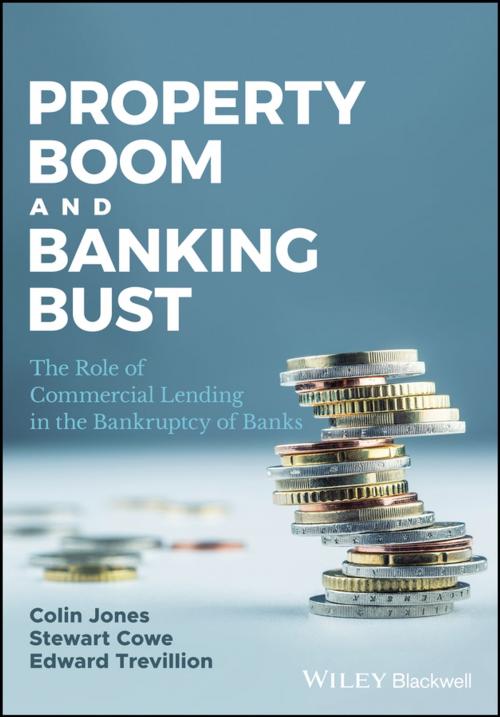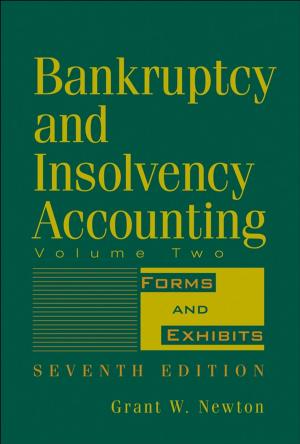Property Boom and Banking Bust
The Role of Commercial Lending in the Bankruptcy of Banks
Business & Finance, Finance & Investing, Real Estate| Author: | Stewart Cowe, Colin Jones, Edward Trevillion | ISBN: | 9781119219217 |
| Publisher: | Wiley | Publication: | November 9, 2017 |
| Imprint: | Wiley-Blackwell | Language: | English |
| Author: | Stewart Cowe, Colin Jones, Edward Trevillion |
| ISBN: | 9781119219217 |
| Publisher: | Wiley |
| Publication: | November 9, 2017 |
| Imprint: | Wiley-Blackwell |
| Language: | English |
A fascinating analysis of the critical role commercial property investment played in the economic boom and bust during the global financial crisis
The unprecedented financial boom stretching from the mid-1990s through 2008 ultimately led to the deepest recession in modern times and one of the slowest economic recoveries in history. It also resulted in the emergence of the draconian austerity policies that have swept across Europe in recent years. Property Boom and Banking Bust offers an expert insight into the complex property market dynamics that contributed to the Great Financial Crisis of 2008 and its devastating economic consequences. It is the first book to focus on a woefully underreported dimension of the crisis, namely, the significant role that lending on commercial property development played in the crisis. Among other key topics, the authors explore the philosophical and behavioral factors that propelled irresponsible bank lending and the property boom; how it led to the downfall of the banks; the impact of the credit crunch on the real estate industry generally in the wake of the financial crisis; the catastrophic effects the property bust had on property investors, both large and small; and how the financial institutions have sought to recover in the wake of the financial crisis.
- Provides valuable insights into what happened in previous booms and busts, particularly in the 1970s and 1980s, and how they compare with the most recent one
- Offers an expert assessment of the consequences of the global financial crisis for the banking system and the commercial property industry
- Examines strategies banks have used to recover their positions and manage the overhang of indebtedness and bad property assets
- Addresses strategies the real estate industry have used to recover from the collapse in property values
Written in an accessible style, and featuring numerous insider case accounts from property bankers, Property Boom and Banking Bust disentangles the complex, tightly-woven factors that led to the Great Financial Crisis of 2008, while offering powerful lessons for property industry professionals on how to avoid having history repeat itself.
A fascinating analysis of the critical role commercial property investment played in the economic boom and bust during the global financial crisis
The unprecedented financial boom stretching from the mid-1990s through 2008 ultimately led to the deepest recession in modern times and one of the slowest economic recoveries in history. It also resulted in the emergence of the draconian austerity policies that have swept across Europe in recent years. Property Boom and Banking Bust offers an expert insight into the complex property market dynamics that contributed to the Great Financial Crisis of 2008 and its devastating economic consequences. It is the first book to focus on a woefully underreported dimension of the crisis, namely, the significant role that lending on commercial property development played in the crisis. Among other key topics, the authors explore the philosophical and behavioral factors that propelled irresponsible bank lending and the property boom; how it led to the downfall of the banks; the impact of the credit crunch on the real estate industry generally in the wake of the financial crisis; the catastrophic effects the property bust had on property investors, both large and small; and how the financial institutions have sought to recover in the wake of the financial crisis.
- Provides valuable insights into what happened in previous booms and busts, particularly in the 1970s and 1980s, and how they compare with the most recent one
- Offers an expert assessment of the consequences of the global financial crisis for the banking system and the commercial property industry
- Examines strategies banks have used to recover their positions and manage the overhang of indebtedness and bad property assets
- Addresses strategies the real estate industry have used to recover from the collapse in property values
Written in an accessible style, and featuring numerous insider case accounts from property bankers, Property Boom and Banking Bust disentangles the complex, tightly-woven factors that led to the Great Financial Crisis of 2008, while offering powerful lessons for property industry professionals on how to avoid having history repeat itself.















